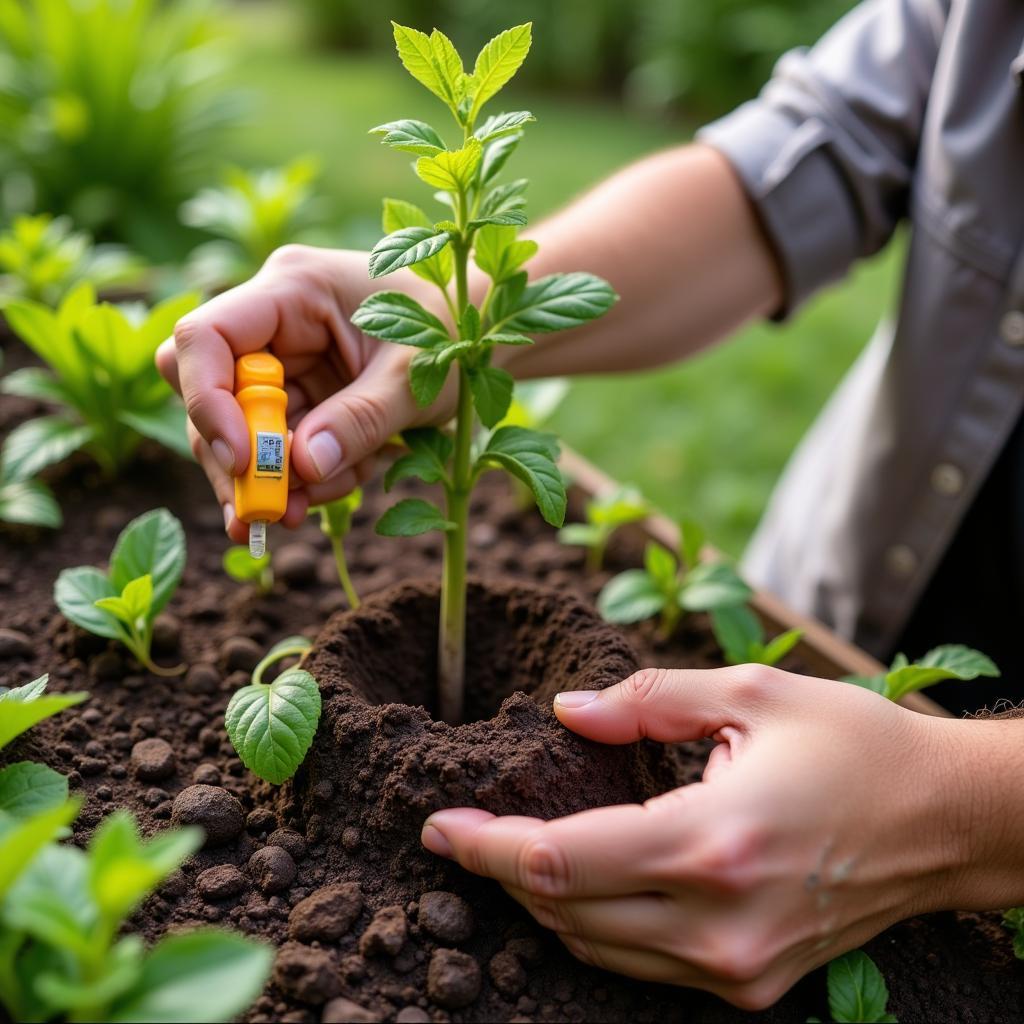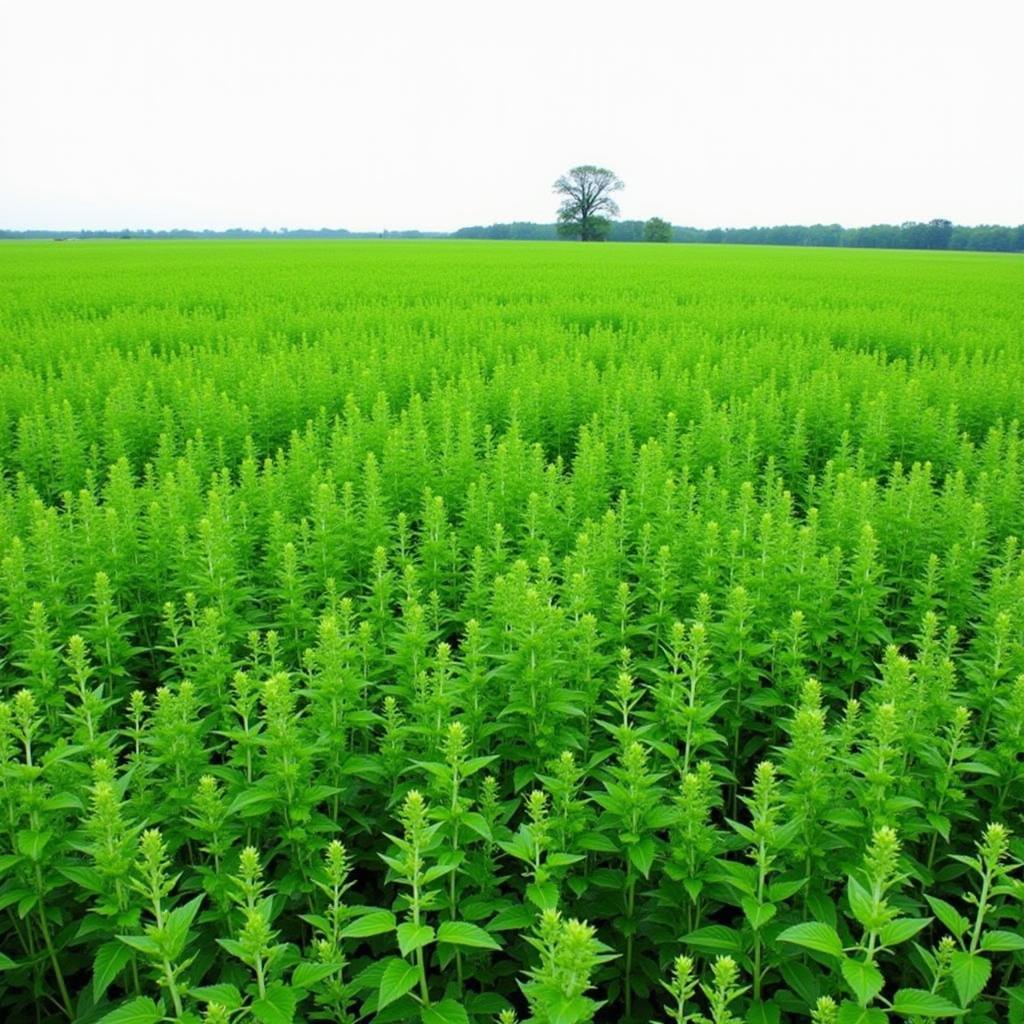Alfalfa is a highly nutritious and attractive forage option for deer, making it a popular choice for food plots. Establishing a successful Alfalfa Deer Food Plot, however, requires careful planning and management. This guide will explore everything you need to know about creating and maintaining a thriving alfalfa food plot that will attract and nourish deer throughout the seasons.
Planting a successful food plot involves understanding the deer’s nutritional needs and providing them with a readily available, high-quality food source. Alfalfa, with its high protein content and palatability, fits this bill perfectly. While it does present some challenges, the rewards of a healthy alfalfa stand are well worth the effort. Let’s delve into the specifics of establishing your own alfalfa deer food plot. Soon, you’ll be enjoying the benefits of a well-maintained and highly attractive food source for your local deer population. A well-planned and executed food plot can greatly enhance the health and well-being of the deer herd, contributing to a thriving ecosystem. Just after the introduction, we recommend checking out our article on the best whitetail food plot for more general food plot strategies.
Understanding Alfalfa’s Benefits for Deer
Alfalfa is a legume, known for its high protein content, which is essential for antler growth, fawn development, and overall deer health. It’s also highly digestible, meaning deer can efficiently extract its nutritional value. Compared to other forage options, alfalfa offers a significant nutritional boost. This can be especially beneficial during stressful periods like winter or late summer when natural forage is scarce. Understanding the nutritional benefits of alfalfa is key to appreciating its value in a deer food plot.
What makes alfalfa so beneficial? It’s packed with essential vitamins and minerals like calcium and phosphorus, vital for bone development. Its deep root system also helps improve soil health by fixing nitrogen, a key nutrient for plant growth. This can benefit not only the alfalfa itself but also surrounding vegetation. Alfalfa can also tolerate drought conditions better than some other forage options, making it a resilient choice for food plots in drier climates.
Site Selection and Soil Preparation for Alfalfa
Alfalfa thrives in well-drained soils with a pH between 6.5 and 7.5. Conduct a soil test to determine your soil’s pH and nutrient levels. Amend the soil accordingly with lime or fertilizer to create the optimal growing environment for alfalfa. Choosing the right location and preparing the soil properly are critical for a successful alfalfa stand. For more perennial food plot options, check out this helpful resource.
Proper site selection is crucial. Alfalfa requires ample sunlight, so choose a location that receives at least six hours of direct sunlight daily. Avoid areas prone to waterlogging, as alfalfa does not tolerate wet feet. Preparing the soil involves removing any existing vegetation and tilling the area to a depth of 6-8 inches. This ensures a good seedbed for the alfalfa seeds to germinate and establish a strong root system. Knowing how to create a deer food plot in the woods can also be valuable, even for sun-loving plants like alfalfa, if you can find a suitable clearing.
 Testing soil pH for alfalfa planting
Testing soil pH for alfalfa planting
Planting and Managing Your Alfalfa Food Plot
The optimal time to plant alfalfa varies depending on your location. In general, late summer or early fall is ideal for planting in northern climates, while spring is preferred in southern regions. Plant alfalfa seeds at a depth of about ½ inch. A seeding rate of 15-20 pounds per acre is generally recommended. After planting, lightly roll the seedbed to ensure good seed-to-soil contact.
Once established, alfalfa requires ongoing management. Weed control is essential, especially during the first year. Regular mowing can help suppress weeds and encourage thicker growth. Alfalfa also requires adequate fertilization, particularly in the spring and after each cutting. Soil testing will help determine the correct fertilizer application rates. Winter food plots for deer, including alfalfa, require specific considerations to ensure they last throughout the colder months. You may consider a triticale food plot as a supplemental option for winter.
Common Challenges and Solutions
While highly rewarding, alfalfa food plots can present some challenges. One common issue is weed competition, especially during establishment. Implementing a proper weed control strategy is crucial. Another challenge can be soil acidity. Regular soil testing and liming can help maintain the optimal pH range for alfalfa growth.
Insect pests can also pose a threat to alfalfa. Regular monitoring and integrated pest management practices can help minimize damage. Finally, ensuring adequate soil moisture is important, particularly during dry periods. Consider incorporating irrigation if necessary to maintain a healthy alfalfa stand.
Conclusion
An alfalfa deer food plot offers a high-quality, nutritious food source that can significantly benefit your local deer population. By following the steps outlined in this guide, you can successfully establish and maintain a thriving alfalfa stand that will attract and nourish deer for years to come. Remember that careful planning, proper soil preparation, and ongoing management are crucial for maximizing the benefits of your alfalfa deer food plot.
FAQ
- What is the ideal pH for alfalfa? The ideal pH for alfalfa is between 6.5 and 7.5.
- When is the best time to plant alfalfa? The best time to plant alfalfa is late summer/early fall in northern climates and spring in southern regions.
- How much alfalfa seed should I plant per acre? A seeding rate of 15-20 pounds per acre is generally recommended.
- How deep should I plant alfalfa seeds? Plant alfalfa seeds about ½ inch deep.
- What are the main benefits of alfalfa for deer? Alfalfa is high in protein, vitamins, and minerals, which are essential for deer health, antler growth, and fawn development.
 A healthy stand of alfalfa in a food plot
A healthy stand of alfalfa in a food plot
For more information on various food plot strategies, you can explore our articles on perennial food plots and winter food plots for deer.
If you need assistance, please contact us at Phone Number: 02437655121, Email: [email protected] Or visit our address: 3PGH+8R9, ĐT70A, thôn Trung, Bắc Từ Liêm, Hà Nội, Việt Nam. We have a 24/7 customer service team.